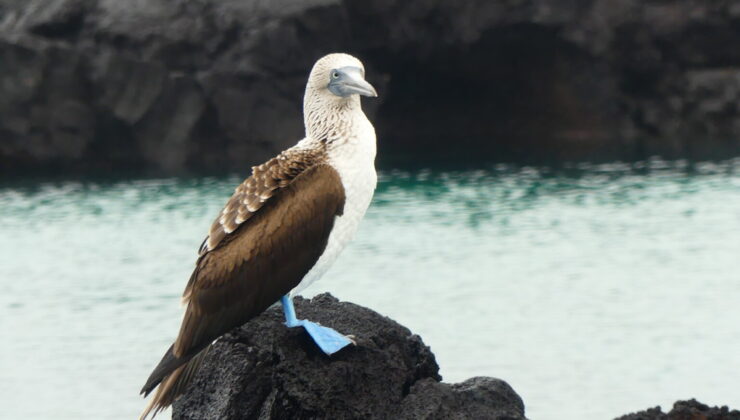
A Smooth Flight to Isabela
To avoid the lengthy boat trip from San Cristobal to Isabela, we booked an early morning flight with Emetebe Airlines. Their website sternly warned that each passenger’s baggage would be weighed individually with no possibility of sharing—even between family members. With the strict 11.3 kilo limit per person, Jesper meticulously weighed and grouped each bag. However, at the airport, they simply bundled everything together.
As we walked out to the small airplane, the reason for the weight restrictions became clear. The plane had only six seats, and the four of us were joined by a single American tourist.
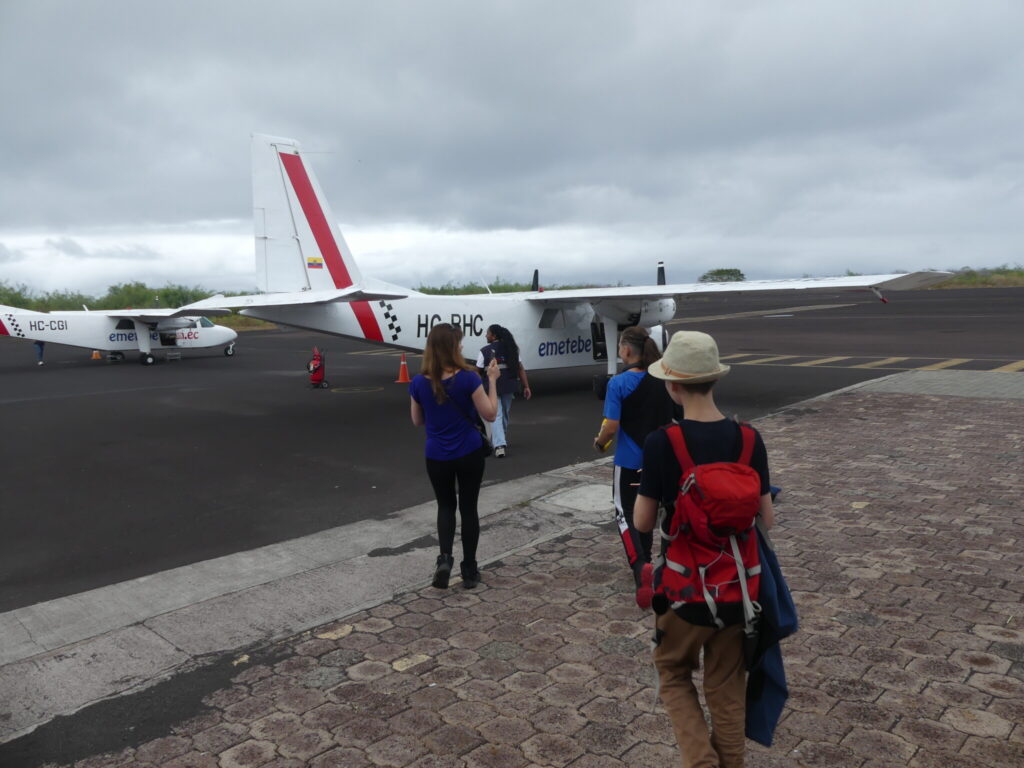
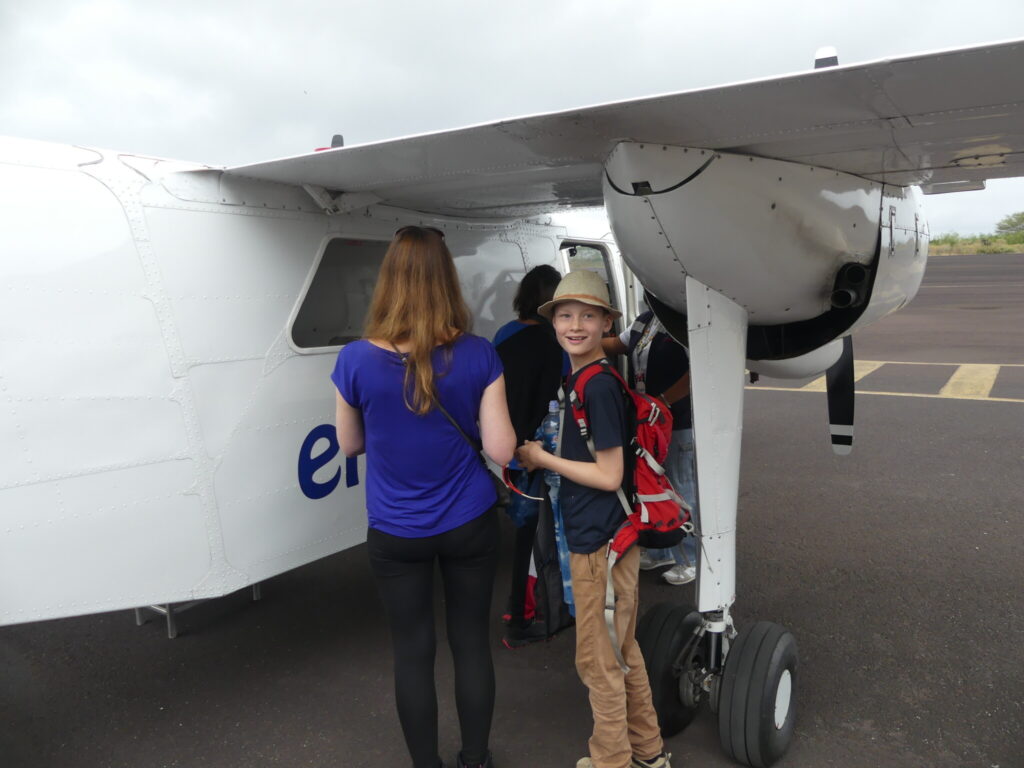
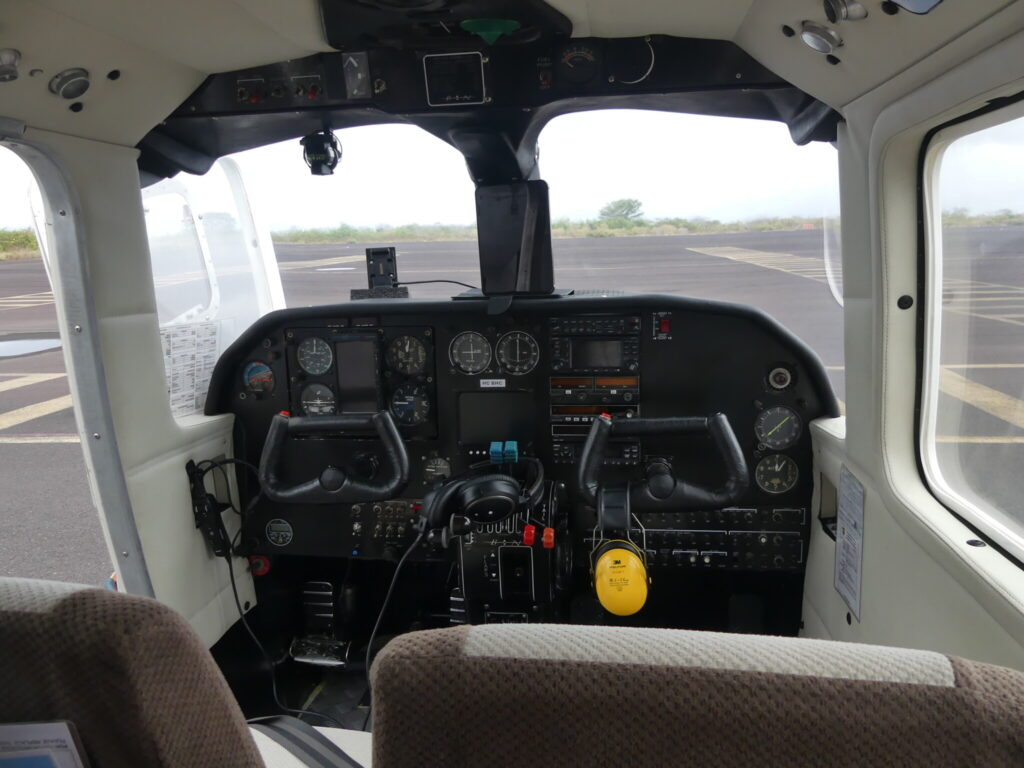
The flight went smoothly, and after about 40 minutes in the air, we touched down on Isabela Island in one of the smoothest landings we have ever experienced.
First Impressions of Isabela
After checking in at Mother Fanny’s and having lunch at Isabela Grill Restaurant, we headed to Concha de Perla, a swimming platform at the edge of the mangrove forest just 1 km away. Other visitors had reported sightings of rays, turtles, penguins, and sea lions in the crystal-clear water, so our hopes were high. Unfortunately, visibility was poor that day, but it was heartening to see Vitus enjoying himself again and we did manage to get a good picture of a frigatebird:
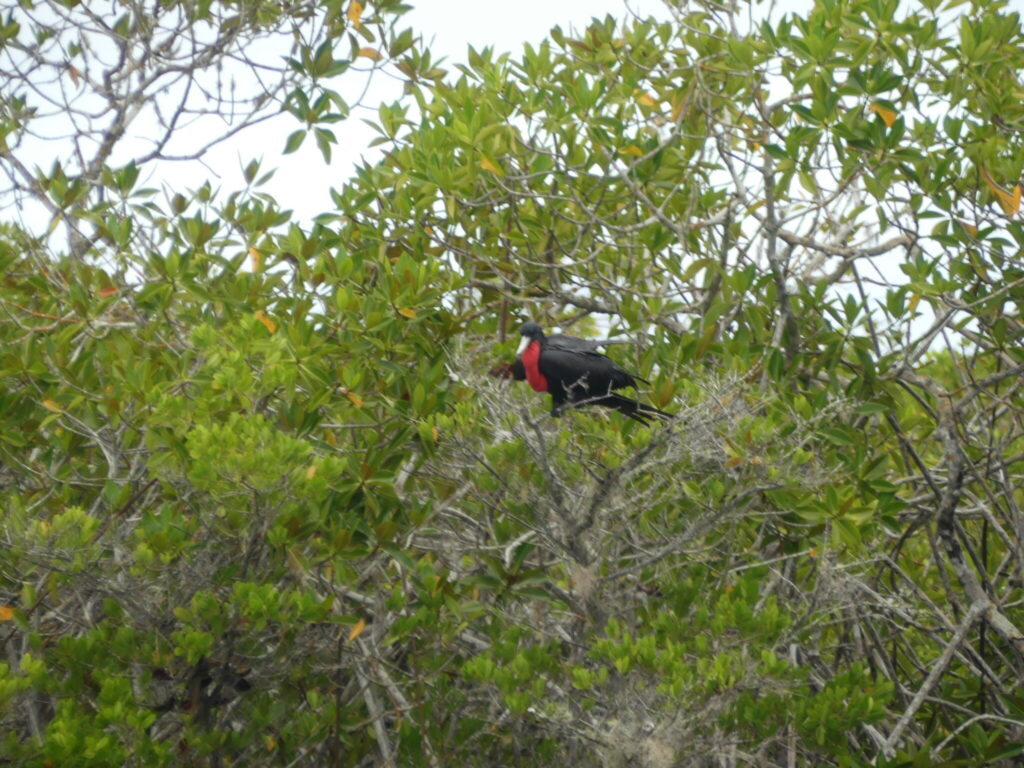
At the end of our swim, he even got to play with a baby sea lion, which absolutely made his day.
A Hike to the Wall of Tears
Our second day on Isabela began with a hike to the Wall of Tears (Muro de las Lágrimas). Although it’s possible to rent bikes for the journey, we opted to hike. This decision was influenced by our need to prepare for the Salkantay trek to Machu Picchu in Peru, the numerous viewpoints along the way, and the potential hassle of flat tires.
Google Maps indicated a 6.3 km hike to the Wall of Tears, but with the many viewpoints and beaches we explored along the way, we ended up covering a total of 18.6 km.
The hike is renowned for the chance to see giant tortoises in the wild, and it did not disappoint. The conservation success in rejuvenating the population of these incredible creatures, which were once nearly driven to extinction by hunting and farming, is truly impressive.
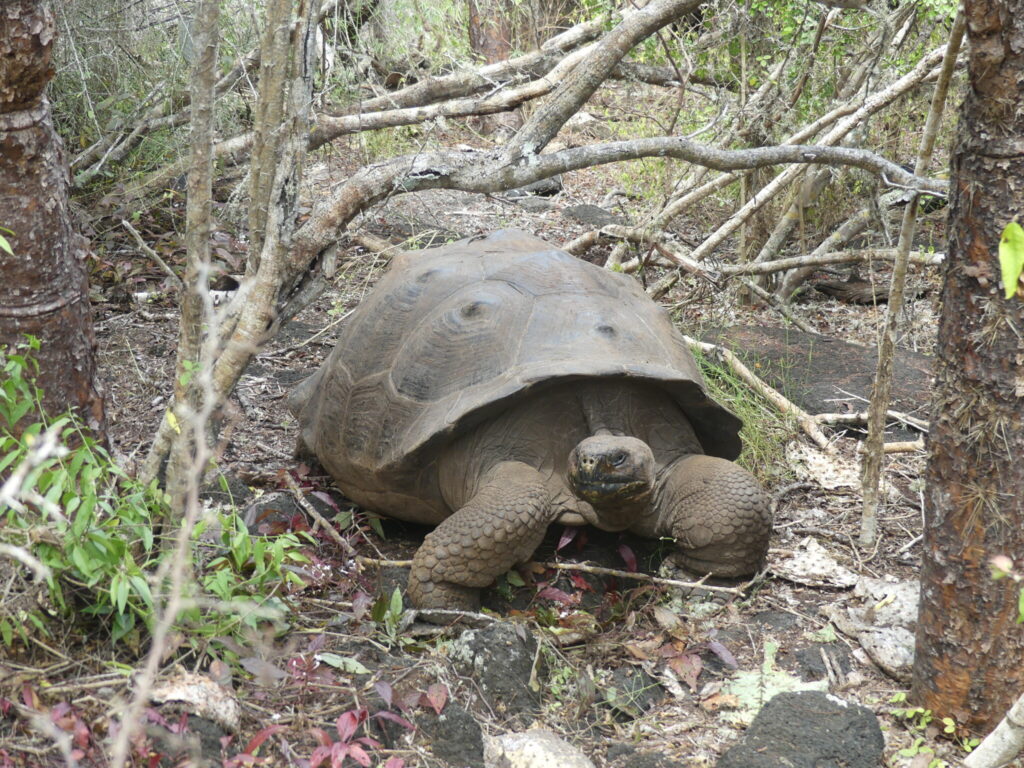
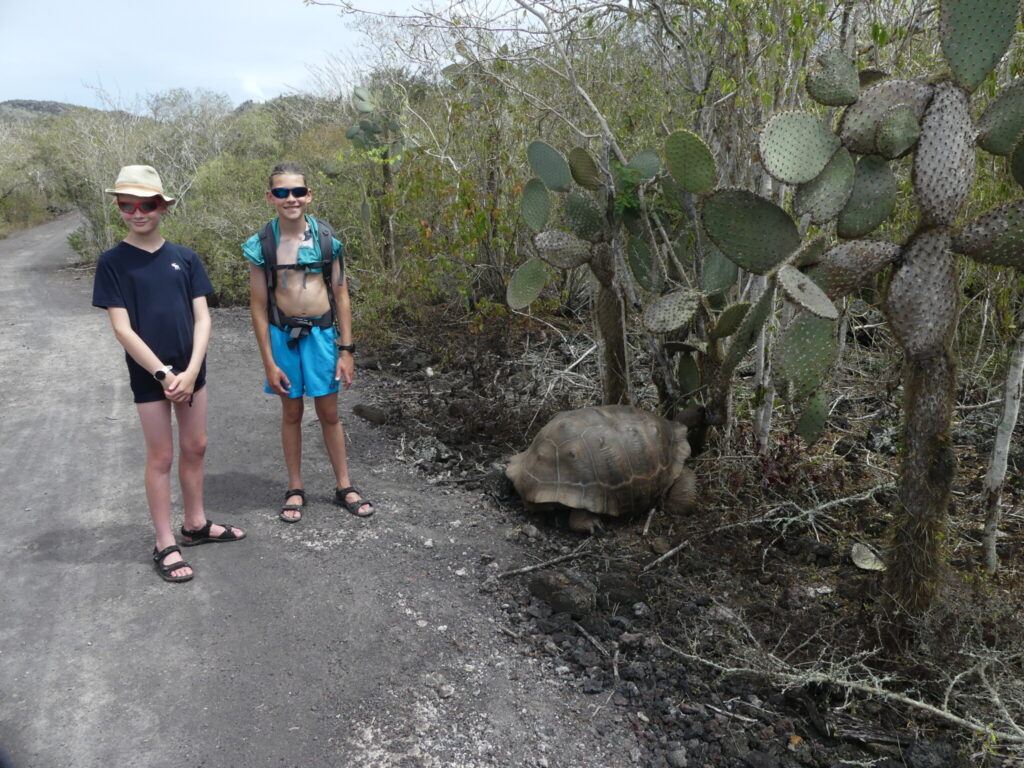
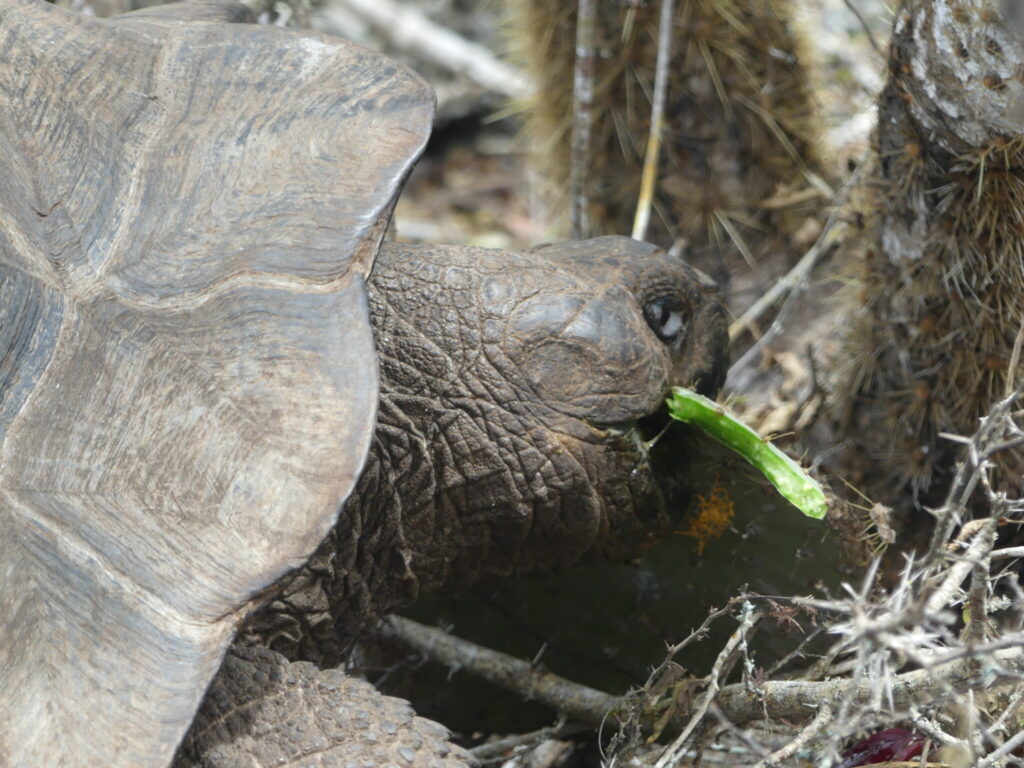
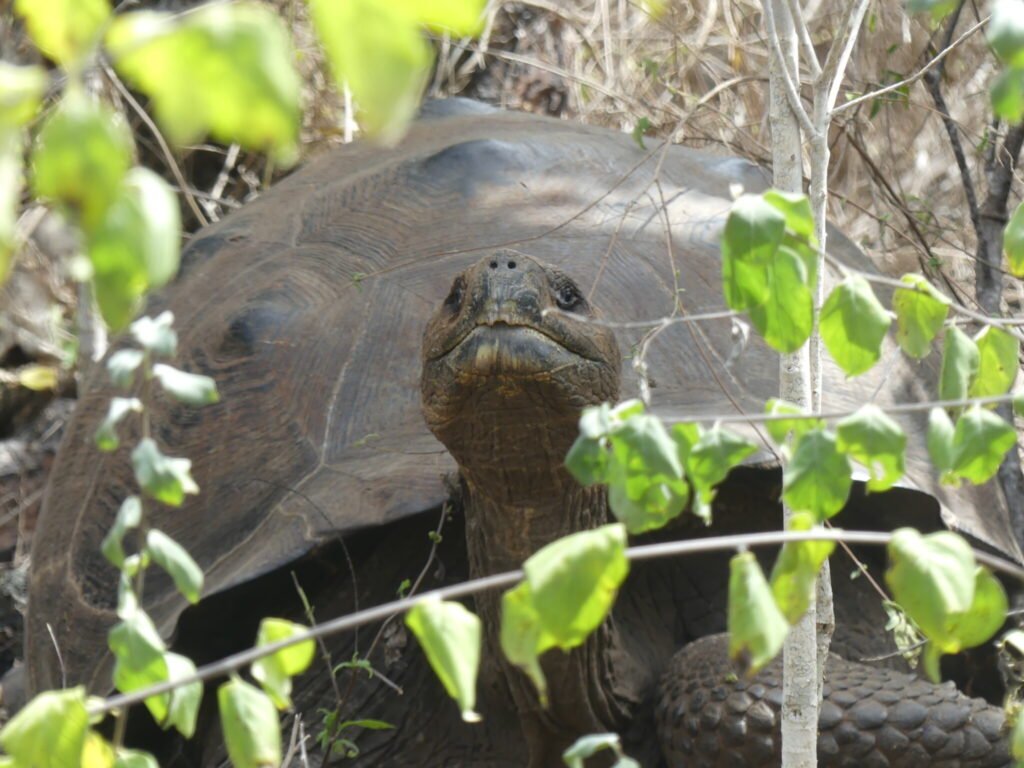
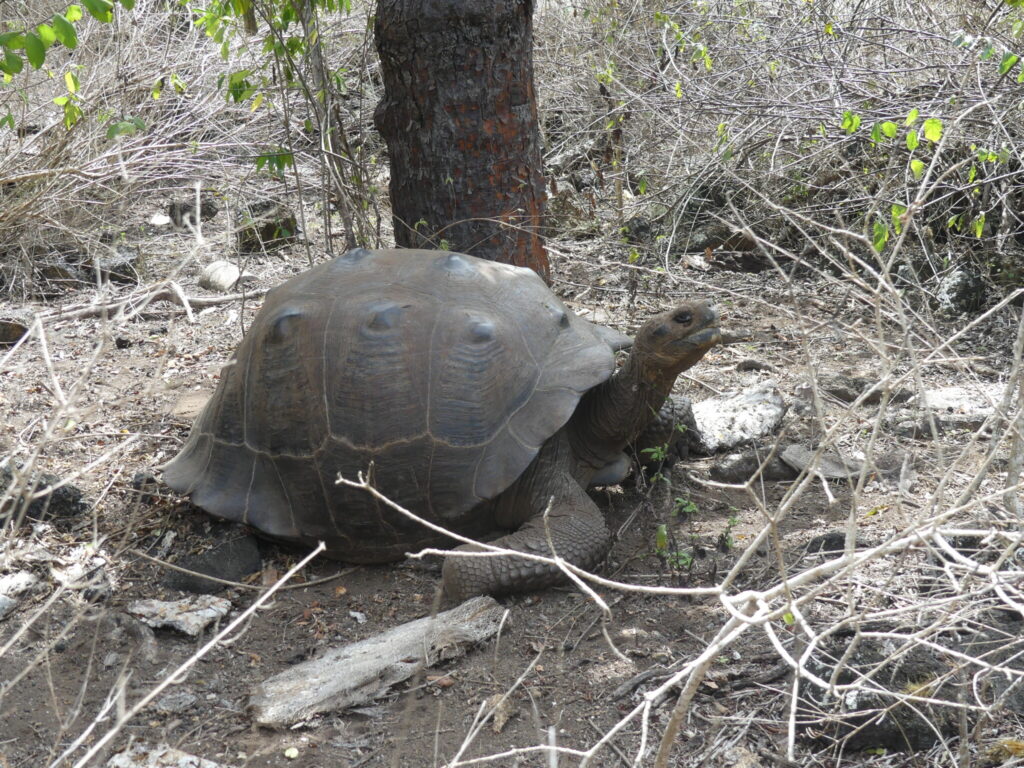
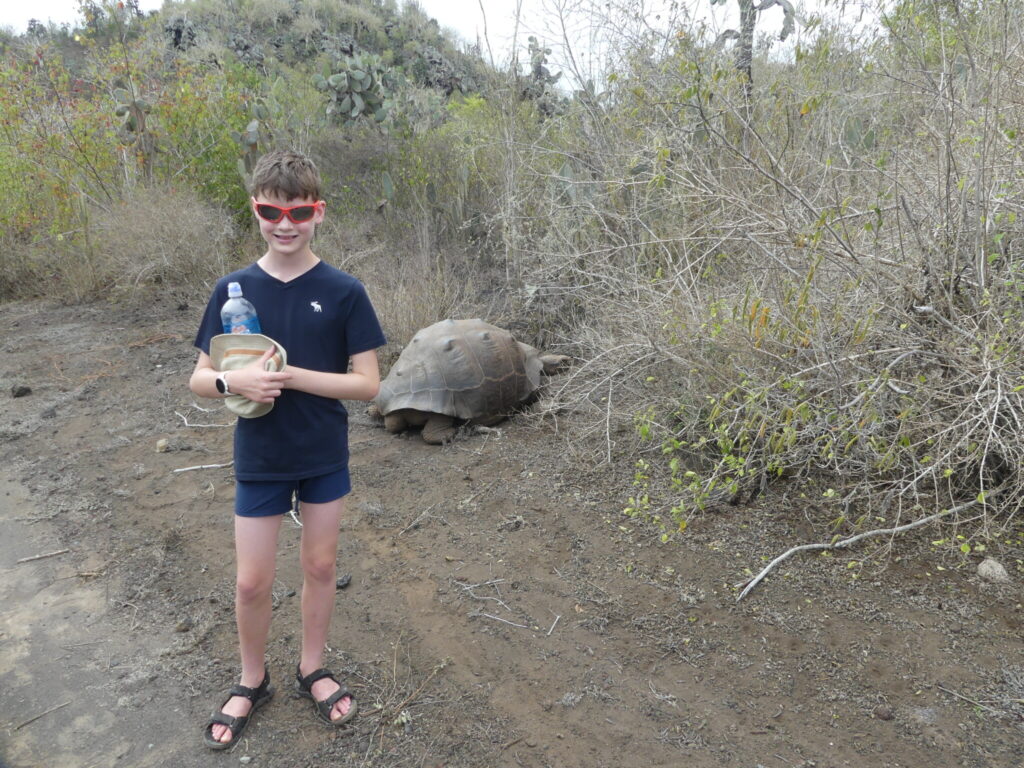
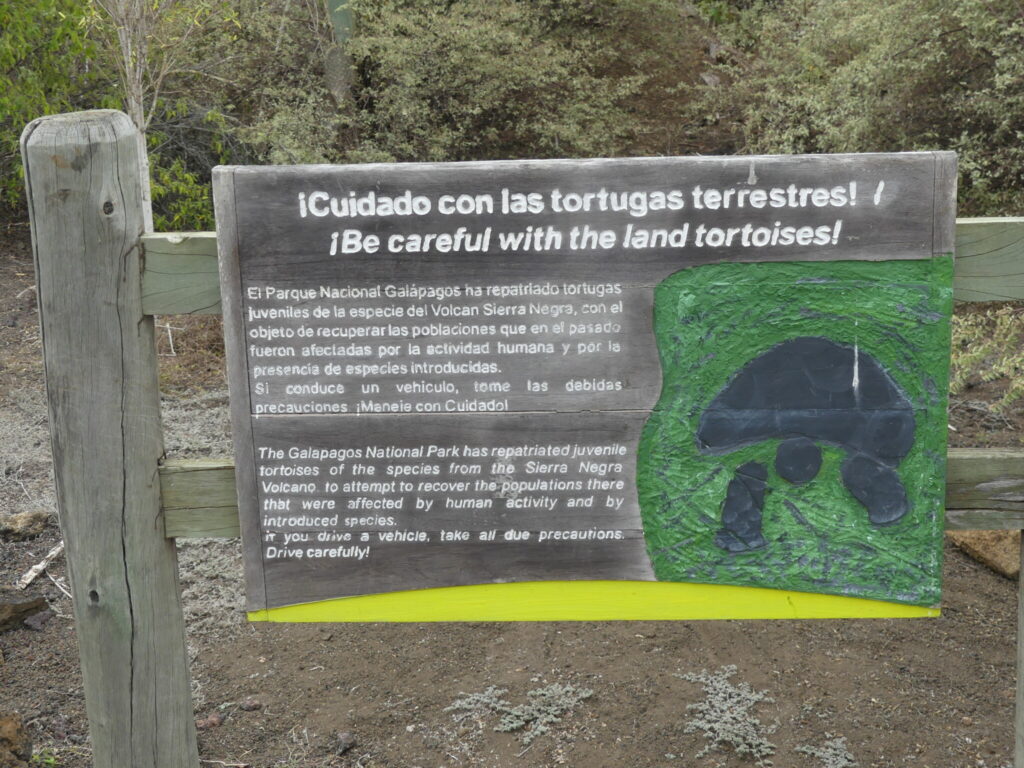
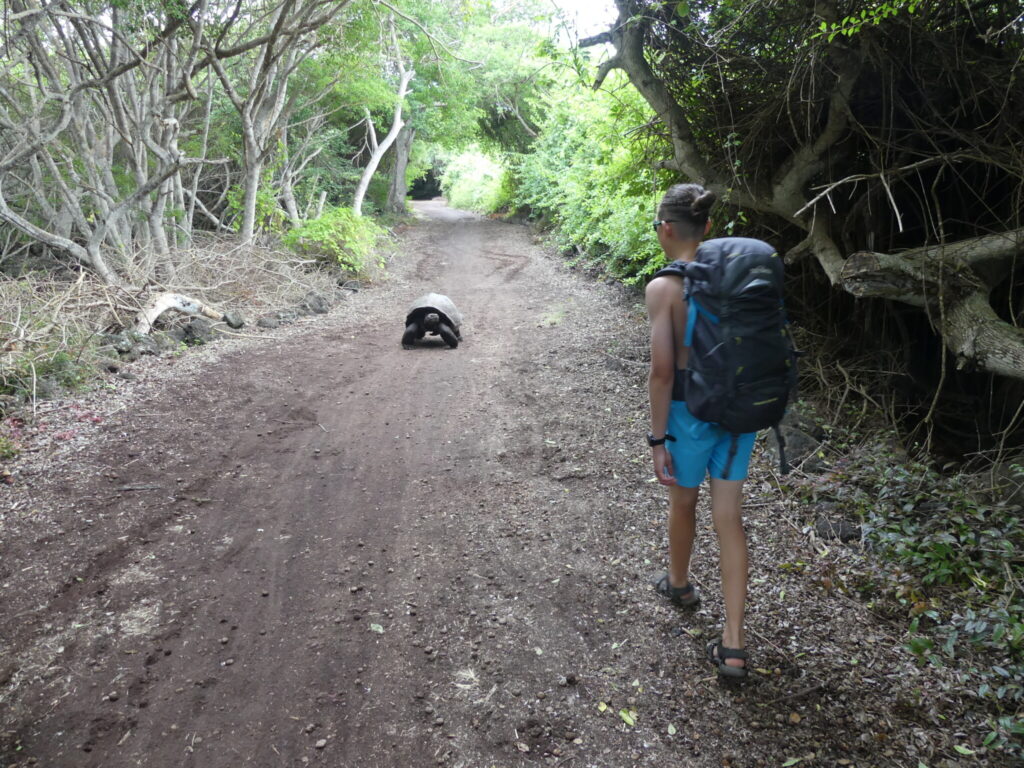
The Wall of Tears itself tells a more somber story. This imposing structure, standing about 25 meters tall, was built between 1945 and 1959 by prisoners of a penal colony established on Isabela by the Ecuadorian government. The wall was constructed entirely by hand, using volcanic rocks from the surrounding area. Prisoners were forced to carry these heavy stones under the harshest conditions, often leading to injury or death. The wall’s construction served no practical purpose and was intended solely as a punishment. Many prisoners, including political dissidents, suffered immensely, and the wall stands today as a stark reminder of the brutality they endured.
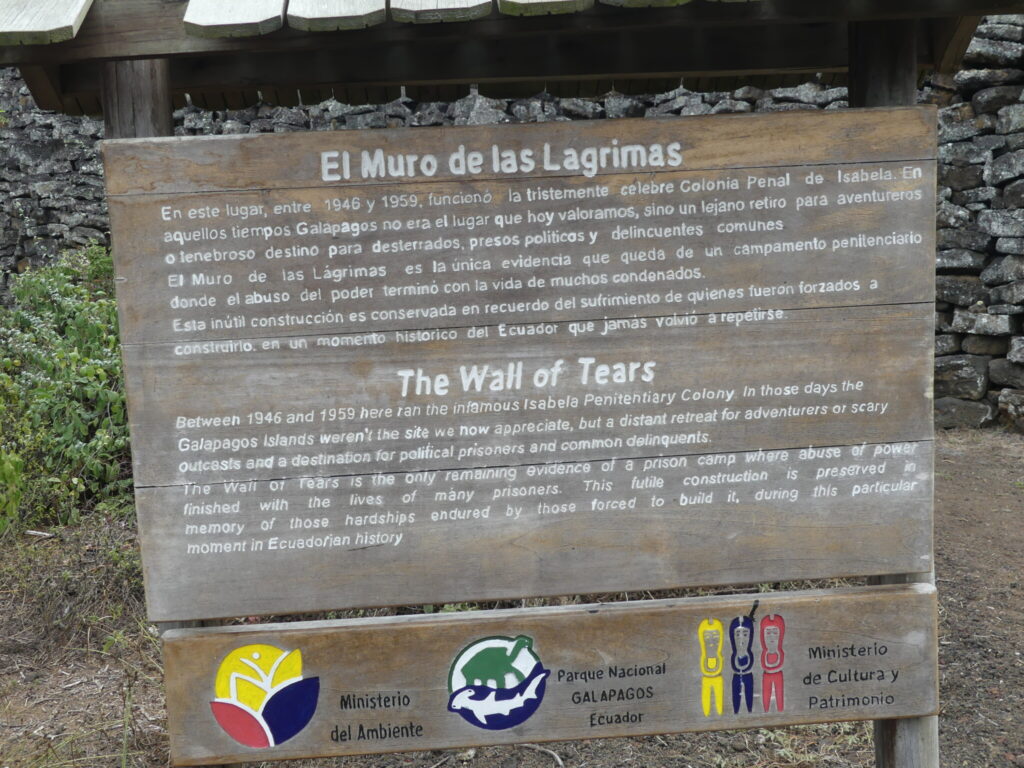
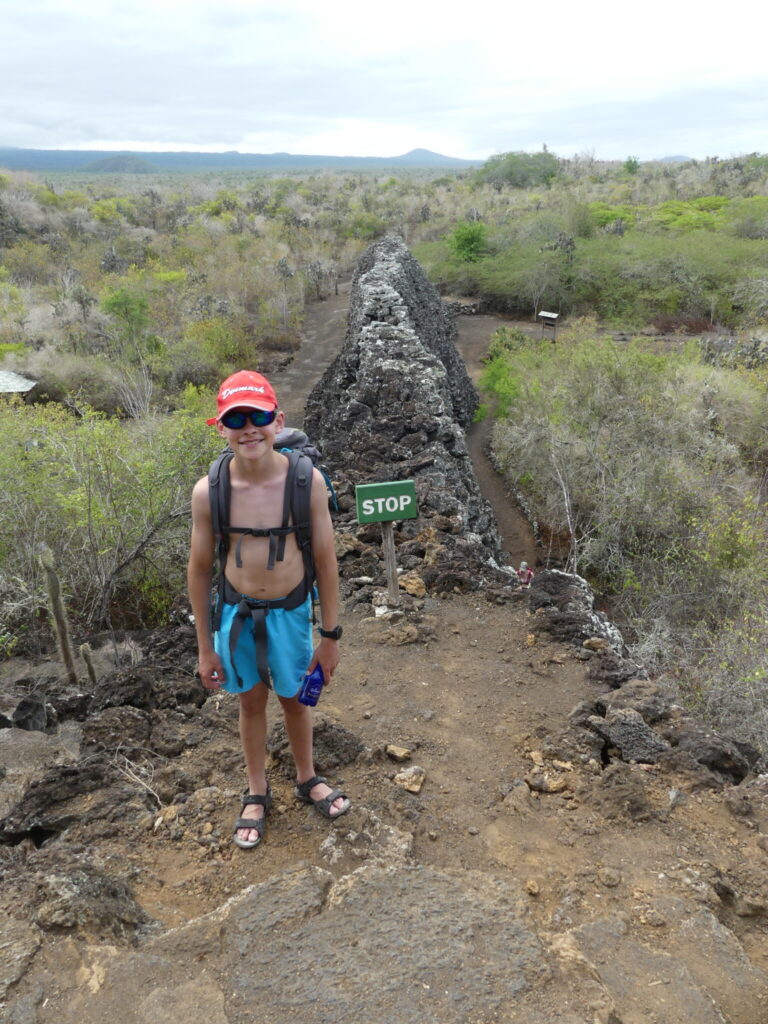
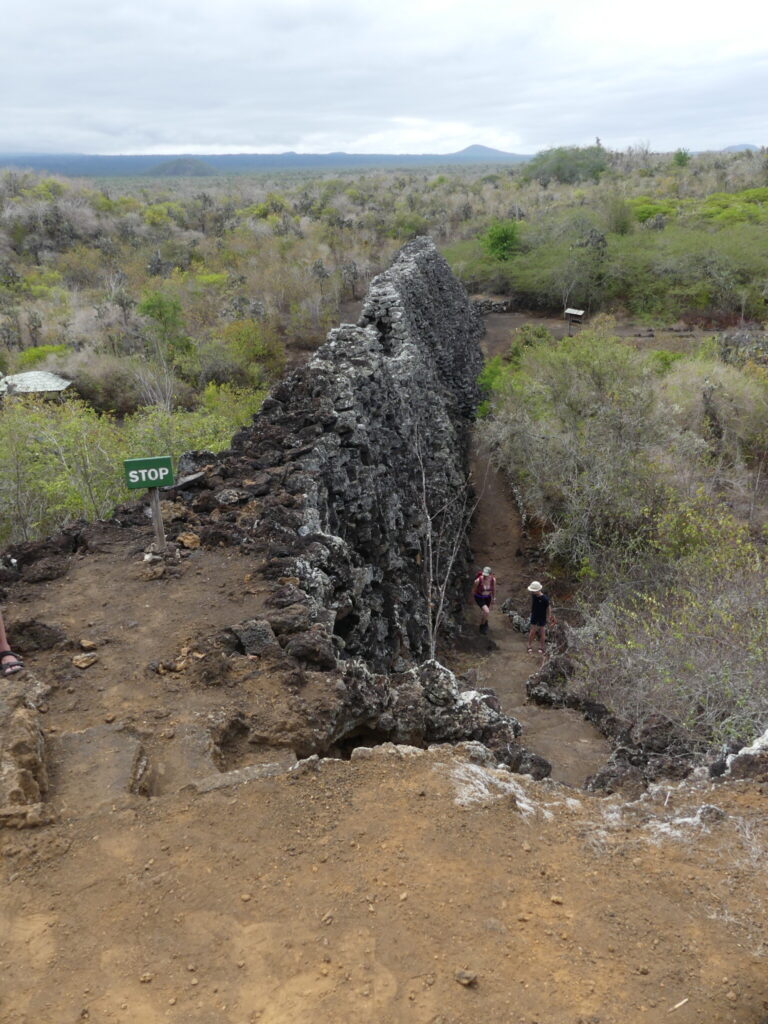
Beach Stops and Wildlife Encounters
Along the hike, several small “beaches” offer opportunities to cool off and observe wildlife. The mangrove beach at El Estero (note that several places along the route share the same name) was a favorite for the boys, who enjoyed exploring the mangroves, despite the poor visibility.
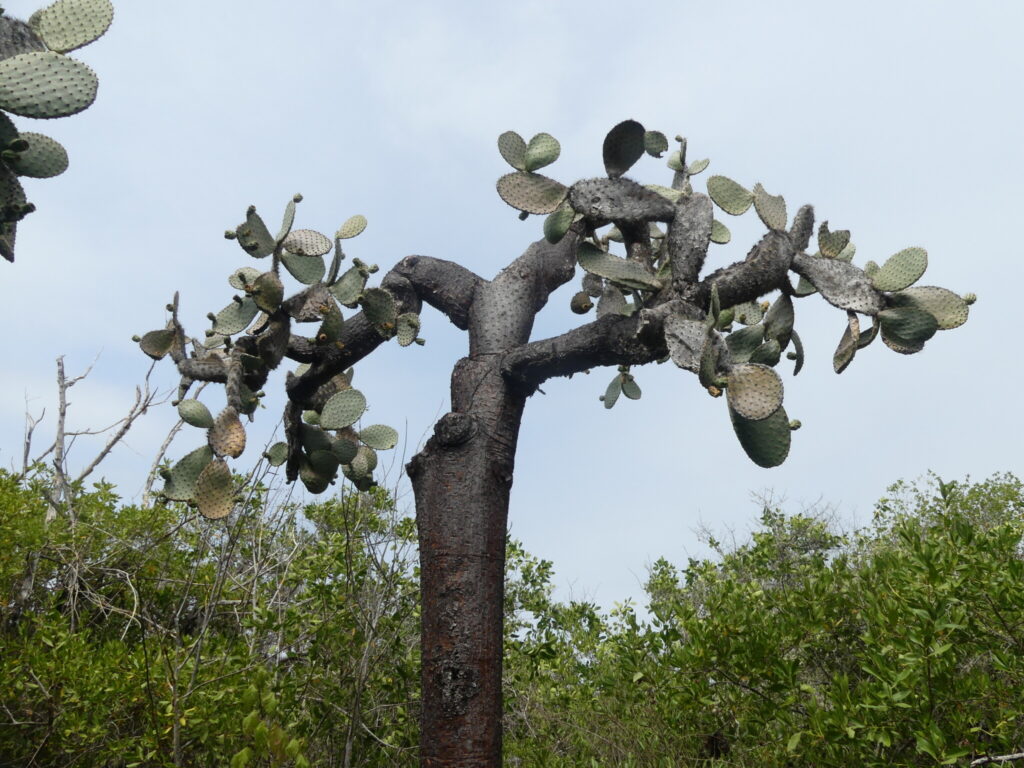
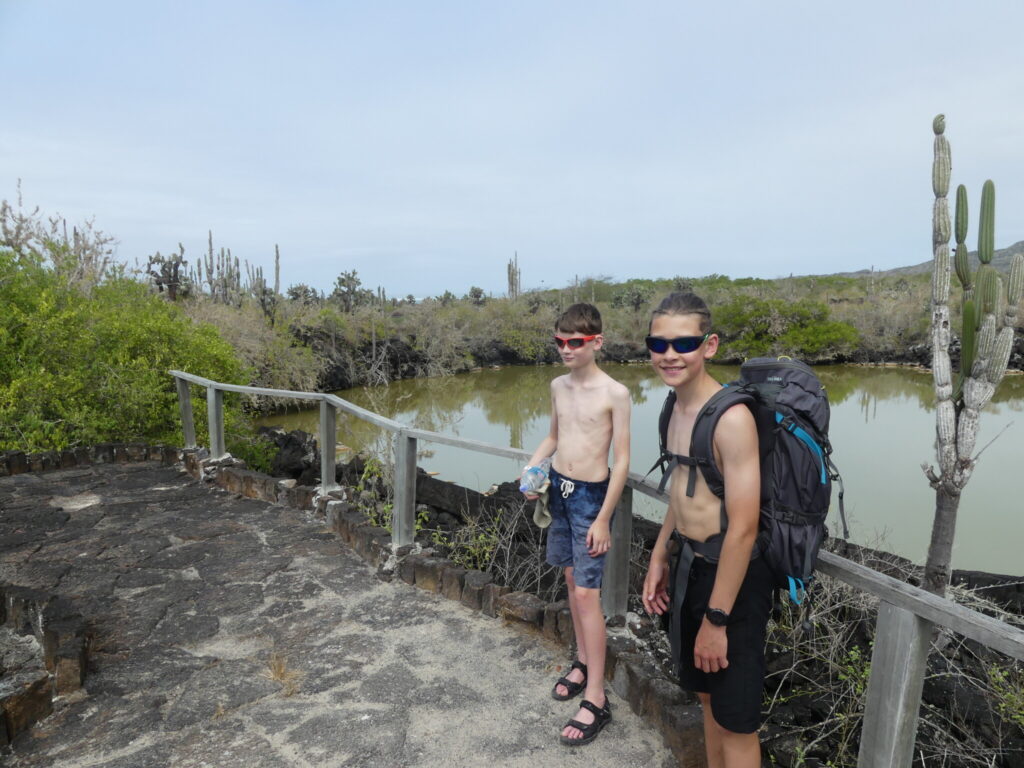
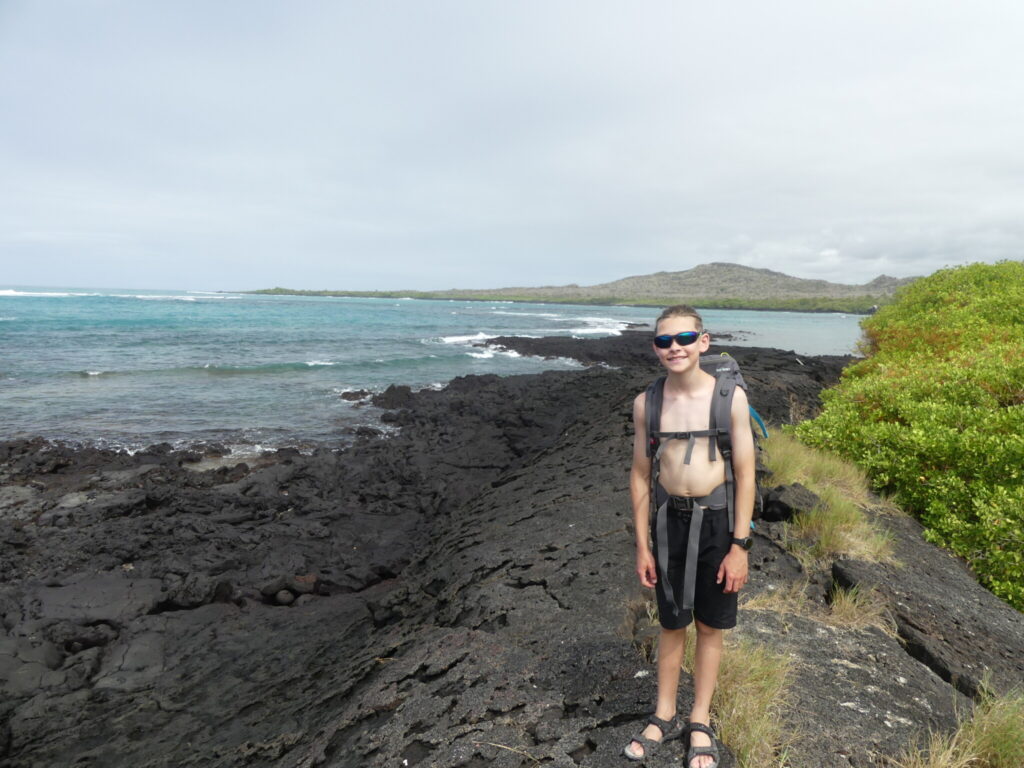
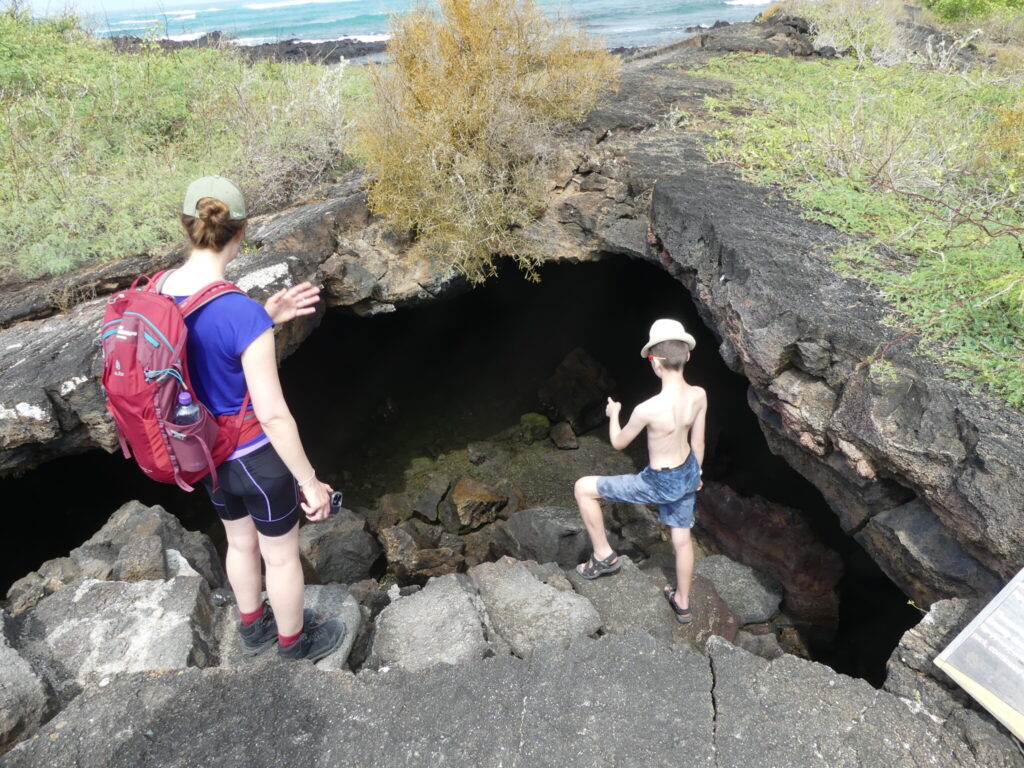
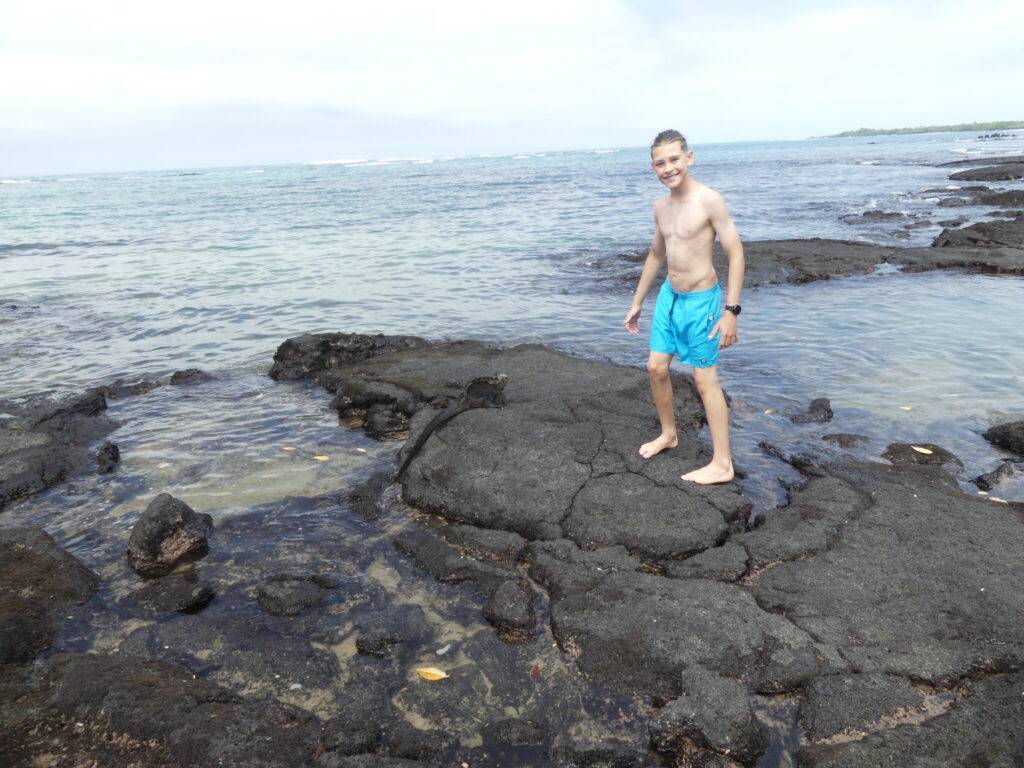
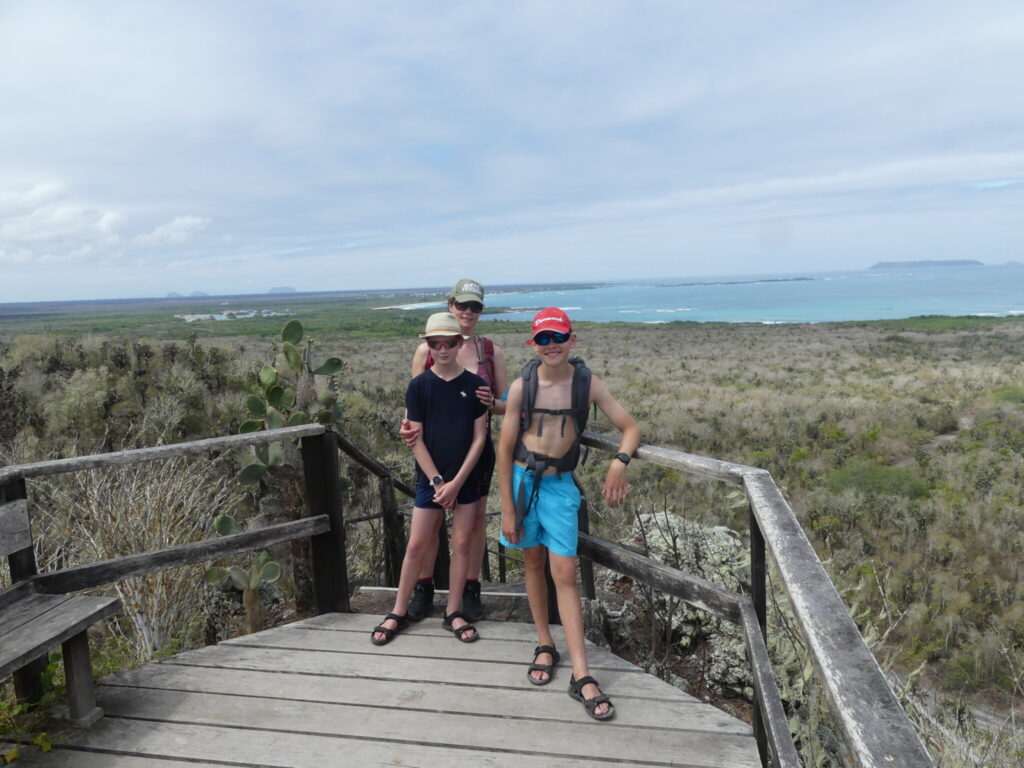
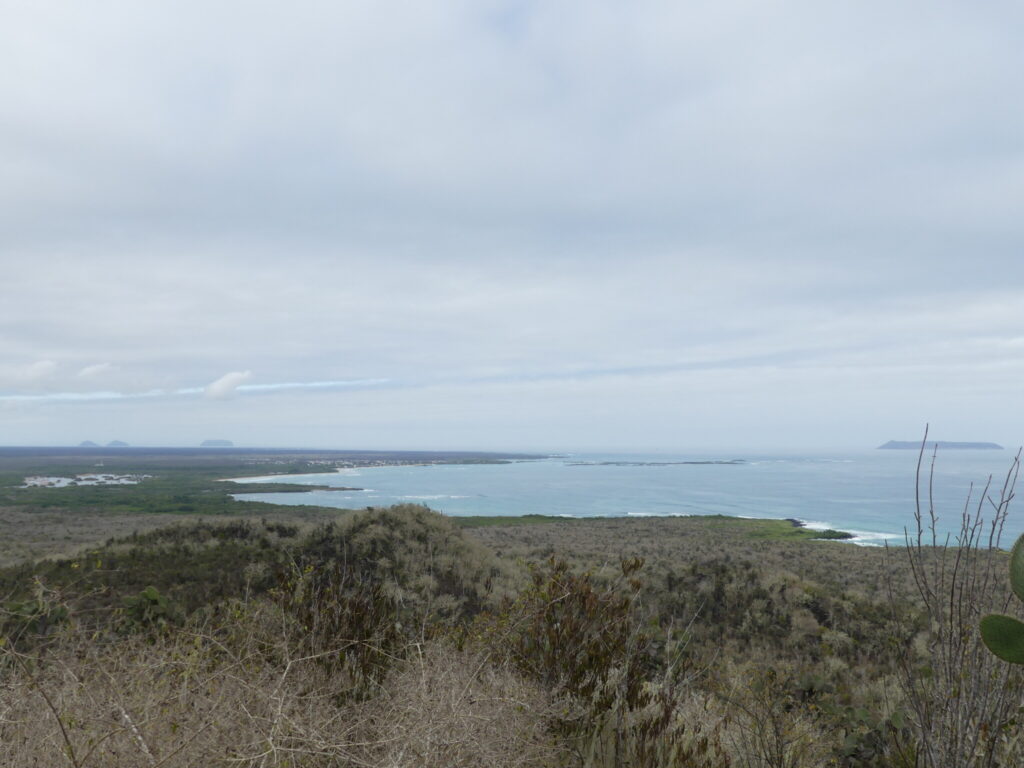
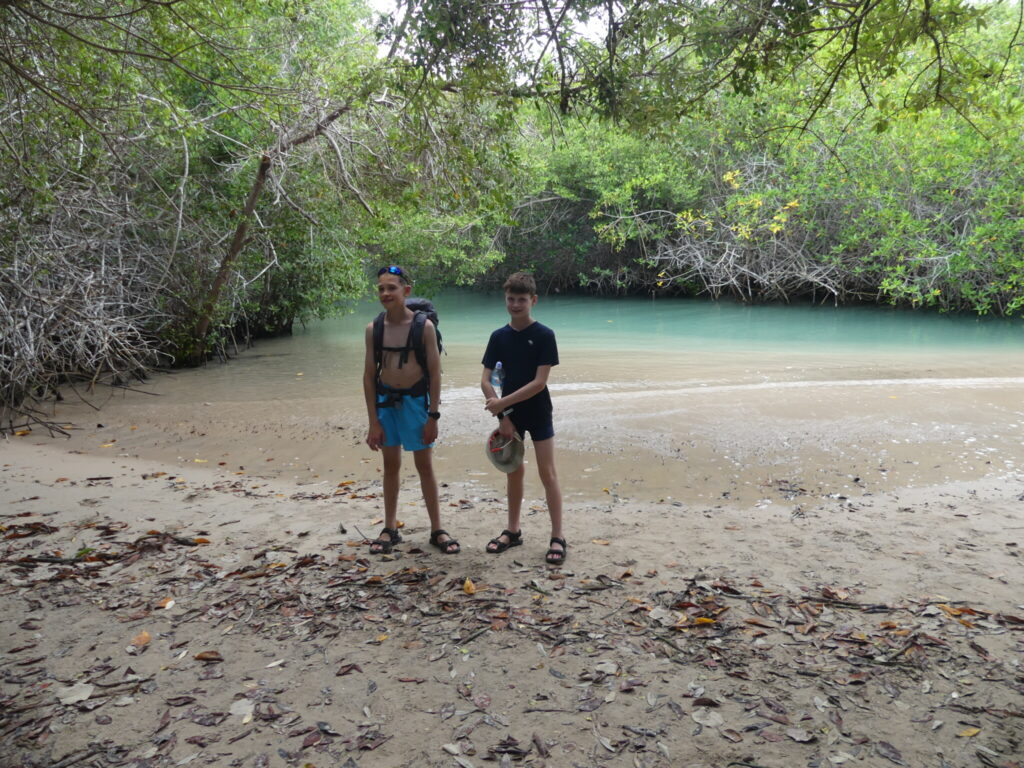
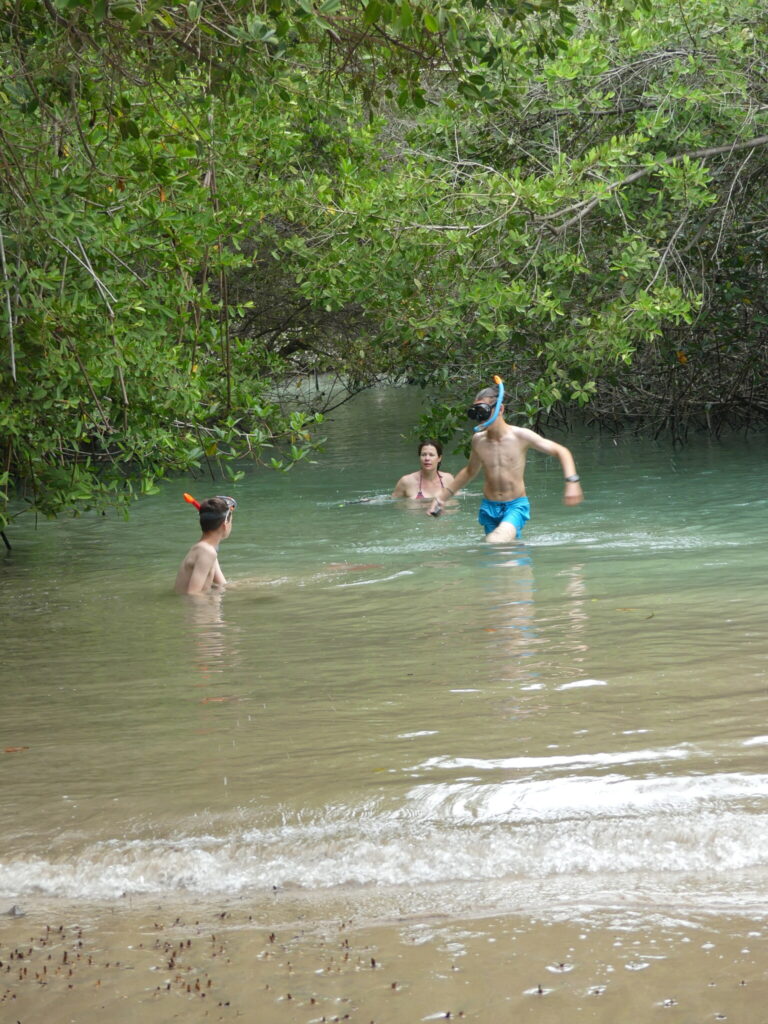
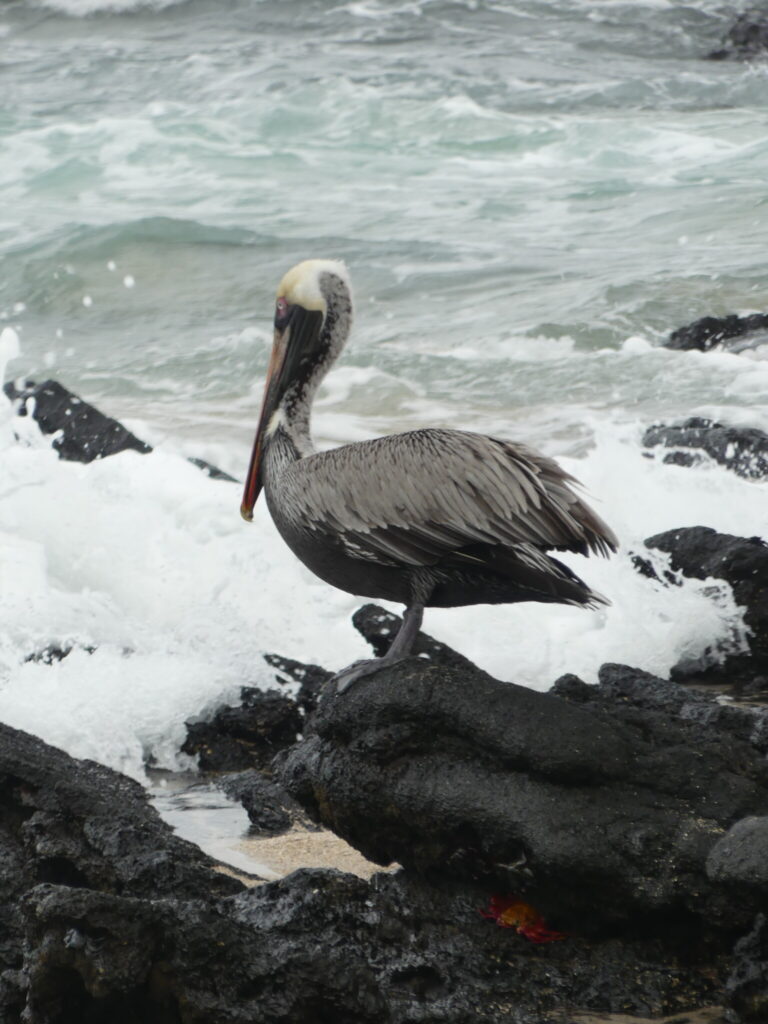
Many visitors have reported seeing penguins and blue-footed boobies along this route, but we were not as lucky this time. However, marine iguanas were so abundant that it felt like navigating an obstacle course to reach the water. We were also fortunate enough to spot three white-tipped sharks during a brief stop to cool off.
A Full Day Adventure
If you plan to visit the beaches and viewpoints along the way, be prepared to spend a full day on this adventure—it took us 7 hours, including a lunch stop. The hike to the Wall of Tears and the exploration of Isabela’s natural beauty made for an unforgettable experience, blending history, wildlife, and breathtaking scenery.
Exploring Los Tuneles
On our final day, Vitus, Noah, and Line embarked on a guided tour of Los Tuneles (Jesper was sick and had to stay back at the hostel). Los Tuneles, or “The Tunnels,” is one of the most remarkable snorkeling sites in the Galapagos, famous for its unique lava formations and rich marine life. Formed by lava flows creating arches and tunnels both above and below water, this site offers a great snorkeling experience.
Vitus, Noah, and Line secured a last-minute deal for $93 each, which included lunch for the “full” day tour from 7 AM to 2 PM including Los Tuneles and Cabo Rosa. The tour started with a scenic boat ride, during which they saw Penguins and blue-footed boobies (from a distance).
Arriving at Los Tuneles, they went for a walk across the lava bridges and in the crystal-clear water they were able to see turtles, sharks and rays and blue-footed boobies up close.
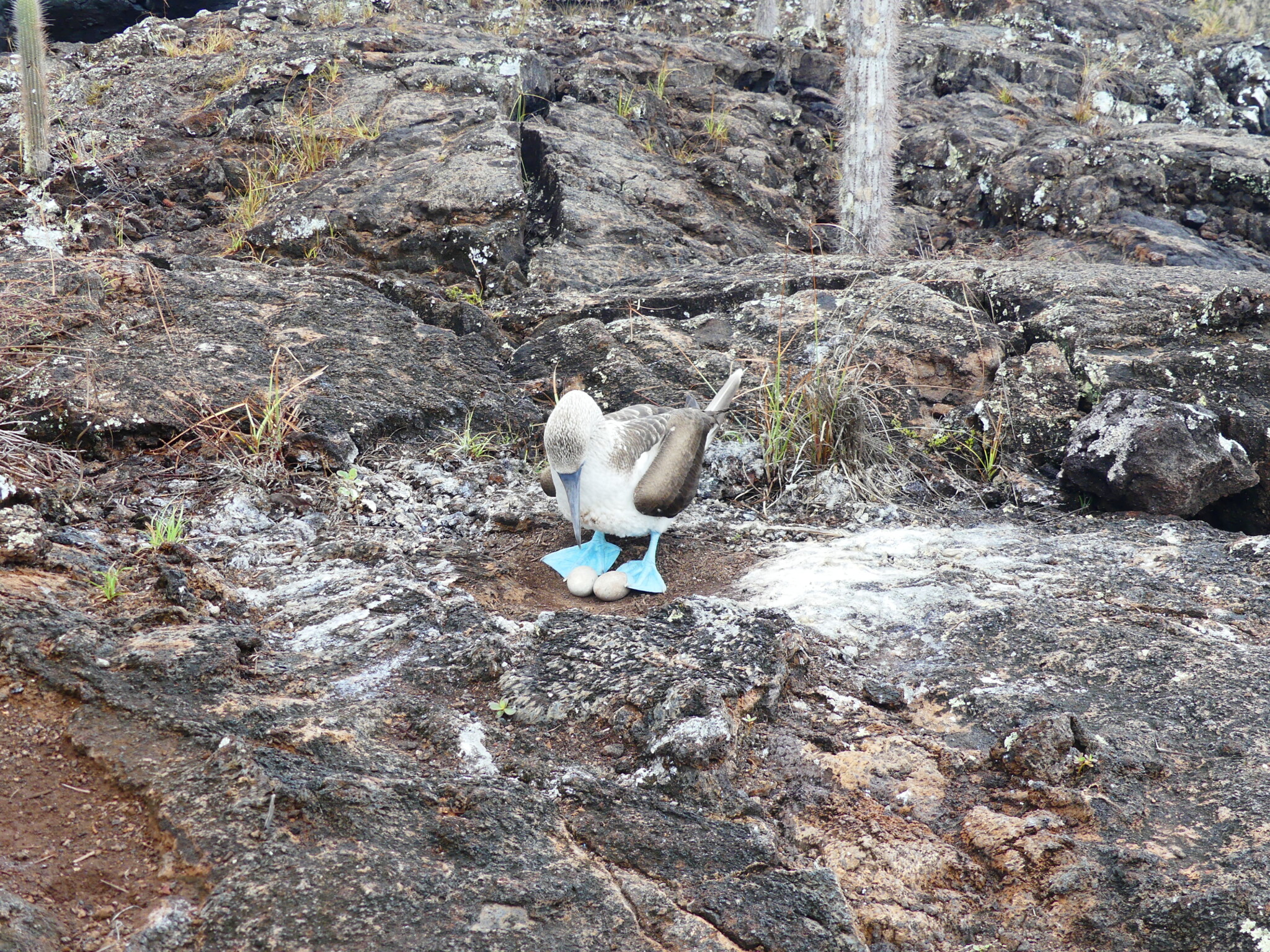
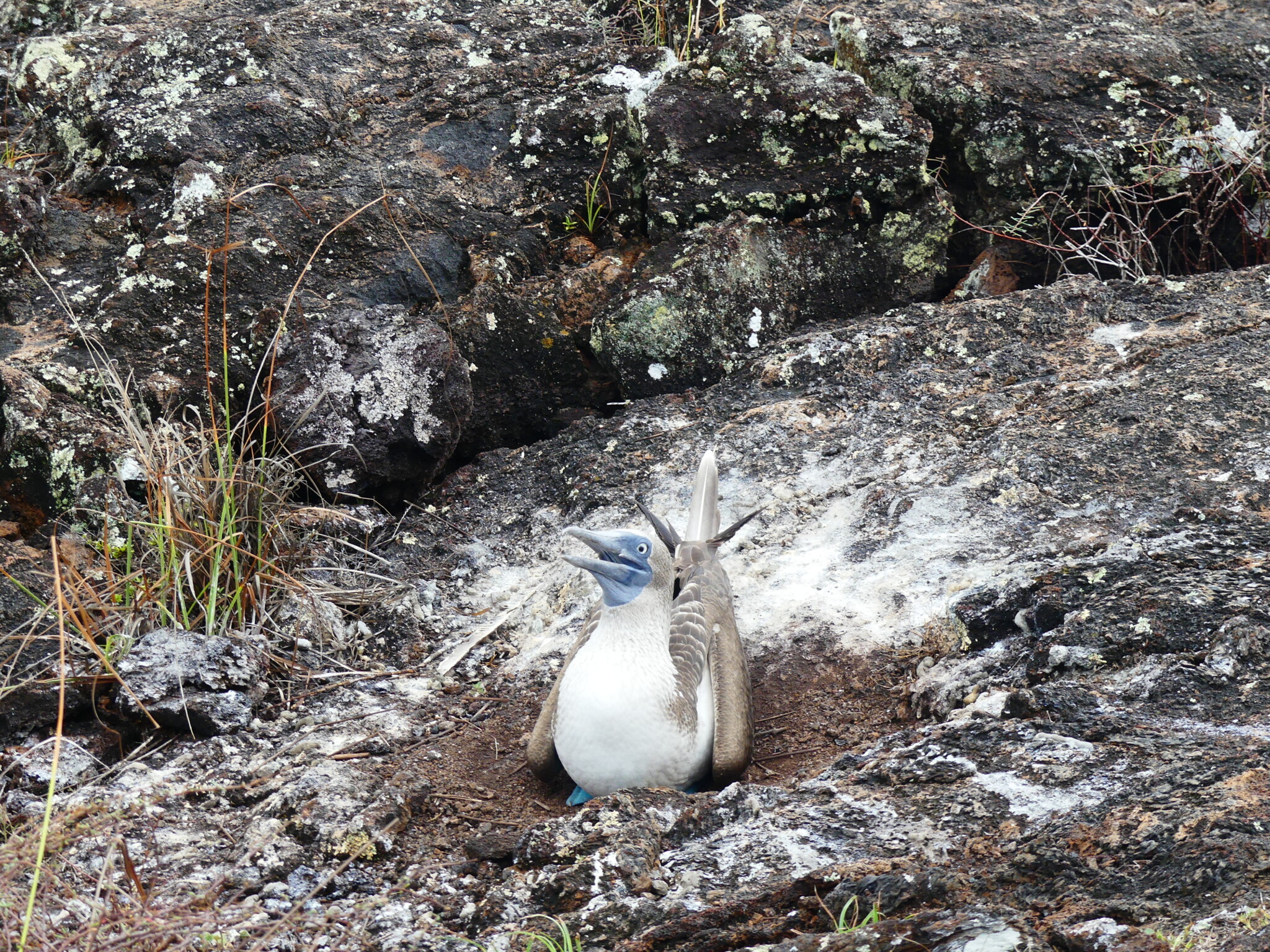
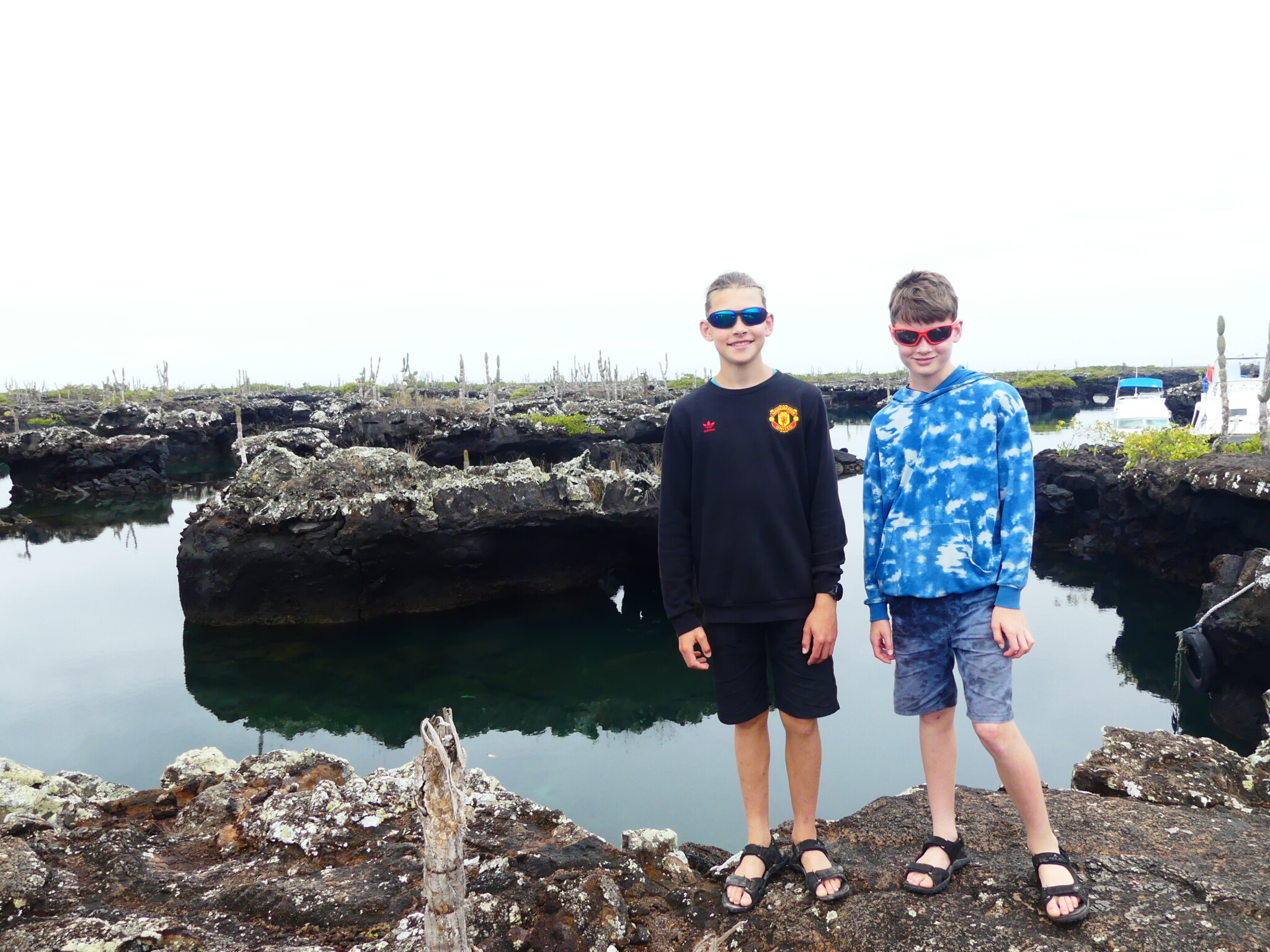
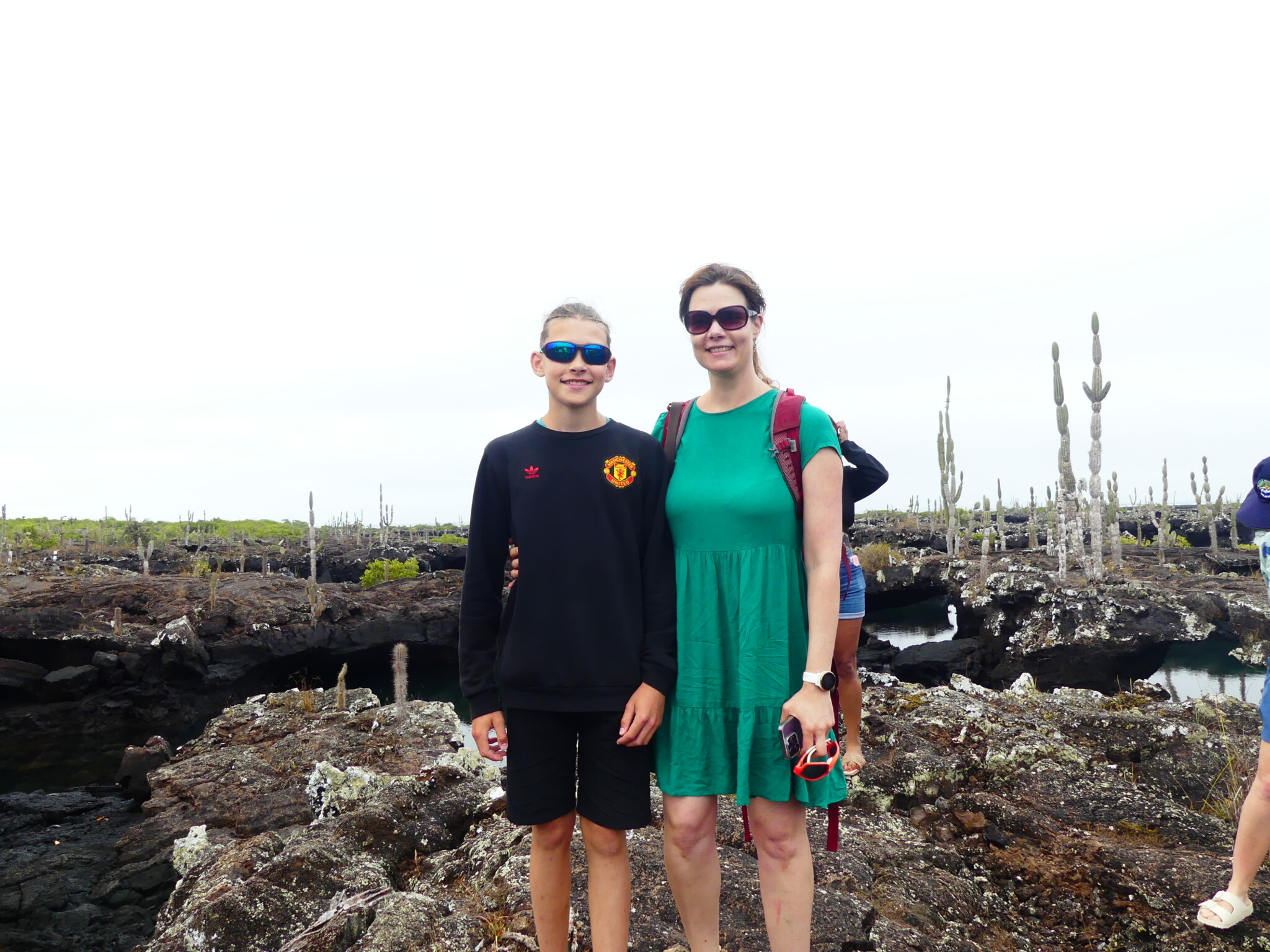
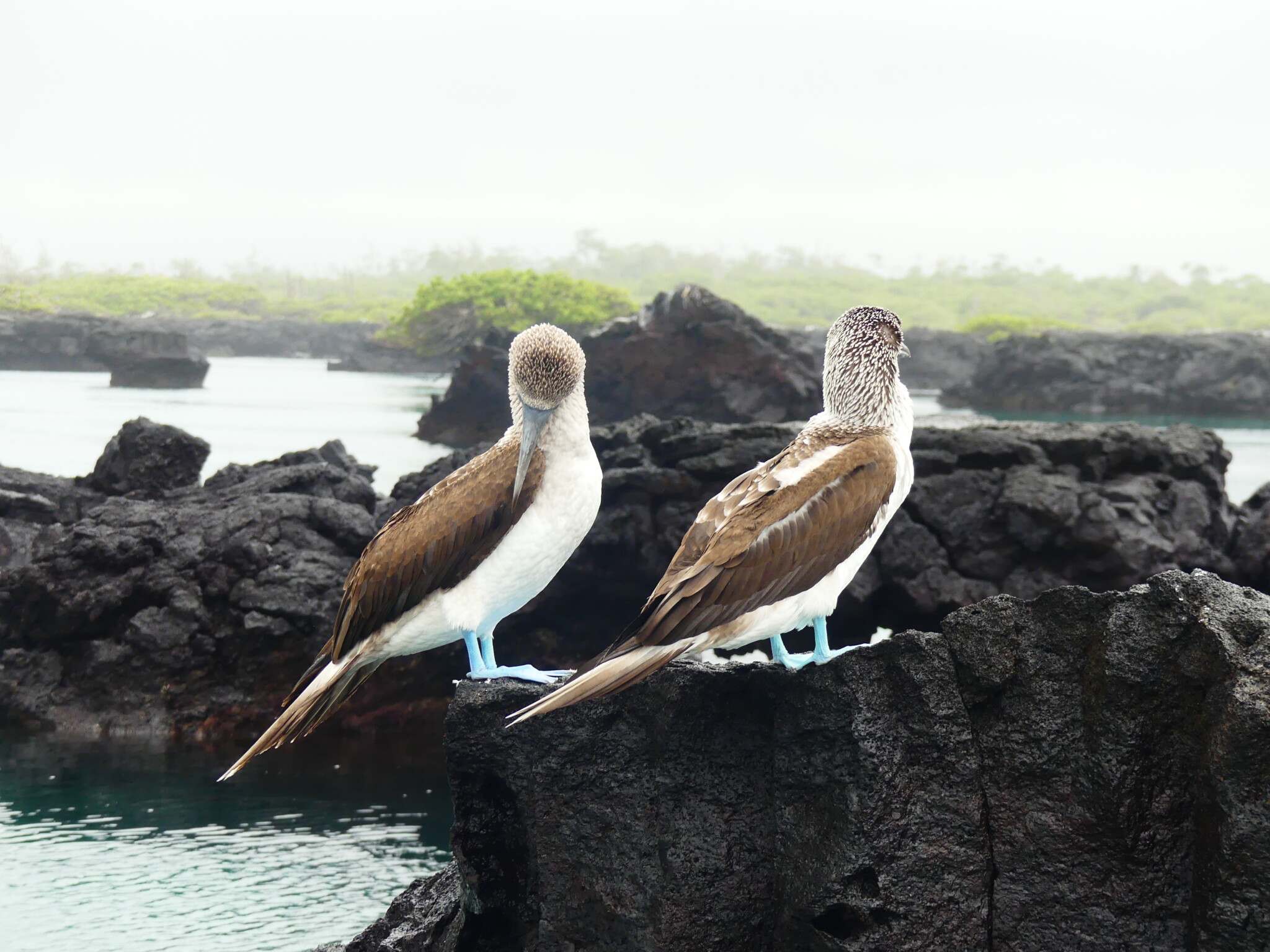
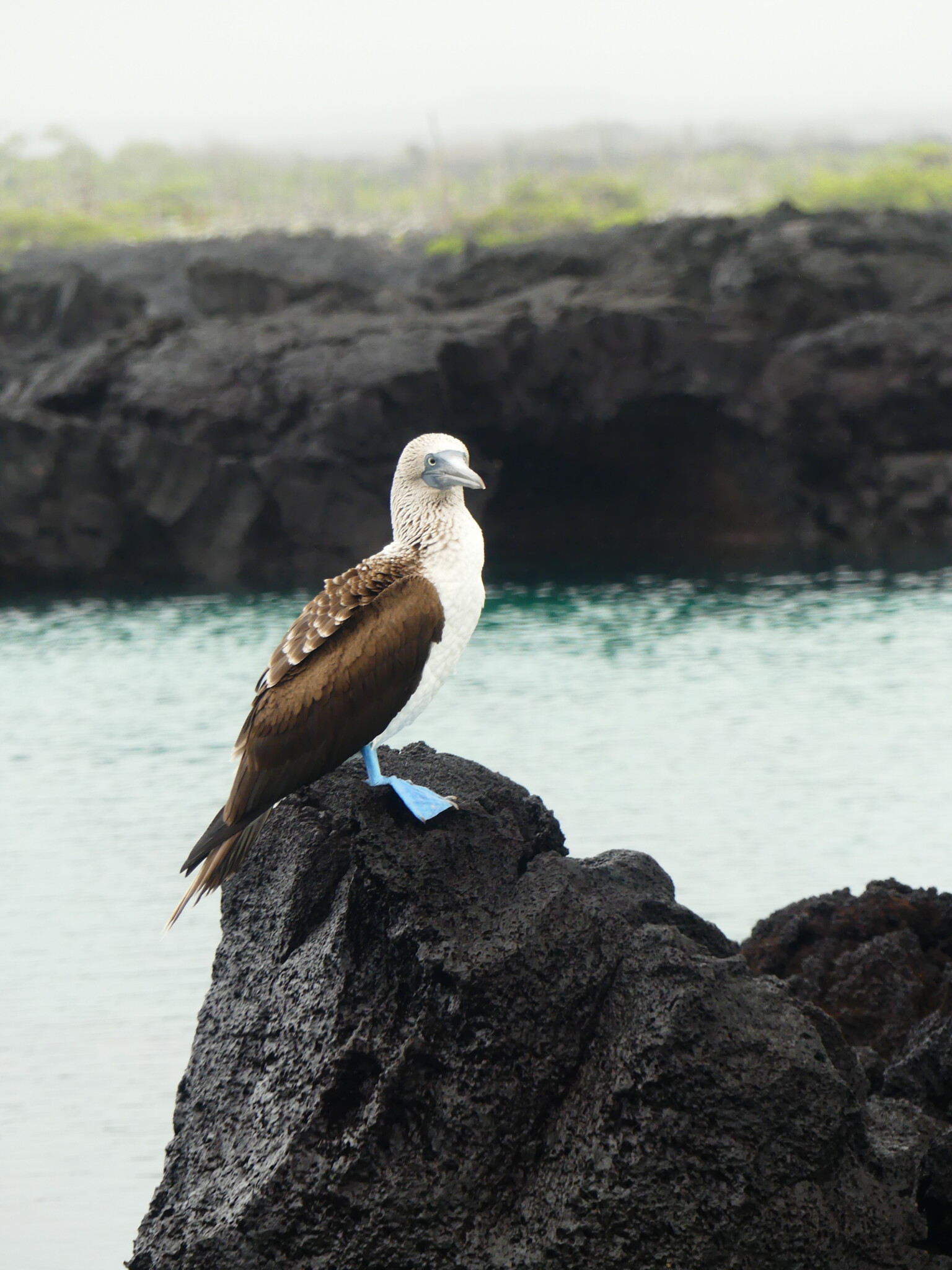
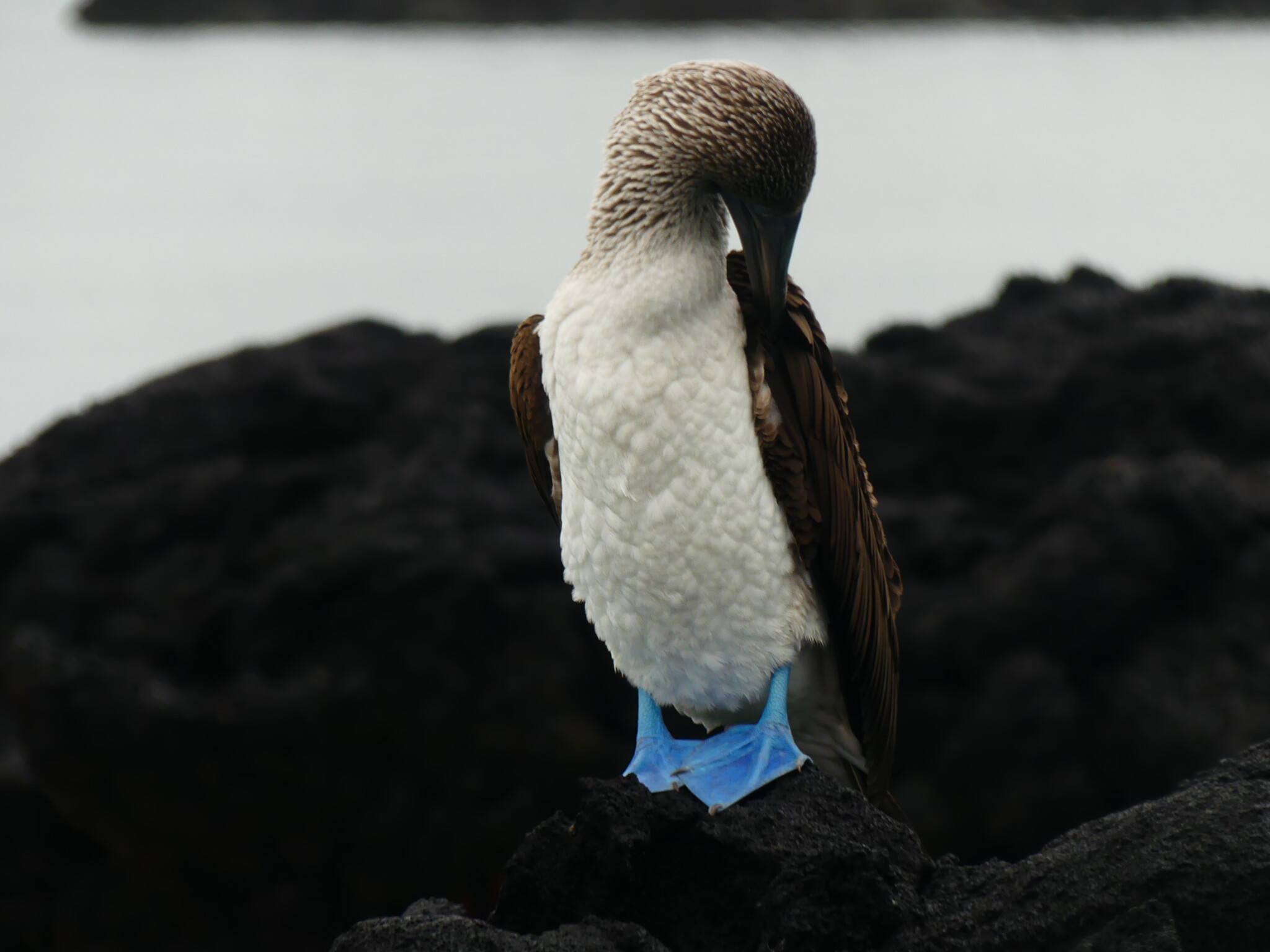
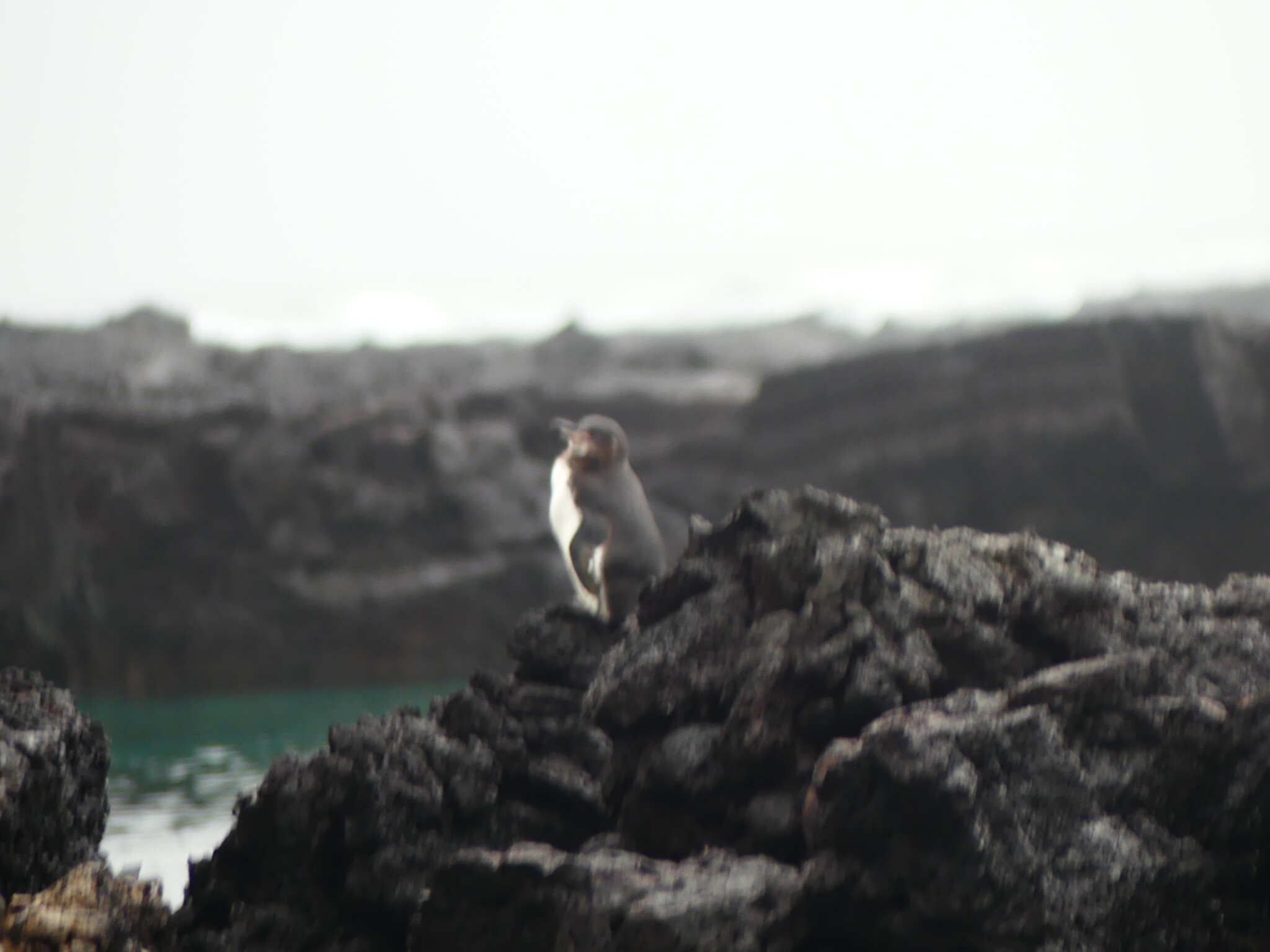
Snorkeling at Cabo Rosa they encountered an astonishing variety of marine life, including seahorses, giant marine turtles, lobsters hiding in caves, octopuses, and sharks resting in grottos. The highlight was snorkeling with eagle rays and golden cownose rays, gracefully gliding through the water (see Noah’s video below. One thrilling, albeit slightly scary, part of the adventure was when the guide had to push them underwater to see the lobsters hidden in a small cave.
Vitus, Noah, and Line had an incredible day and Noah made this video of our entire Isabela trip:
Comments
Leave a Reply
*










Be the first to comment.